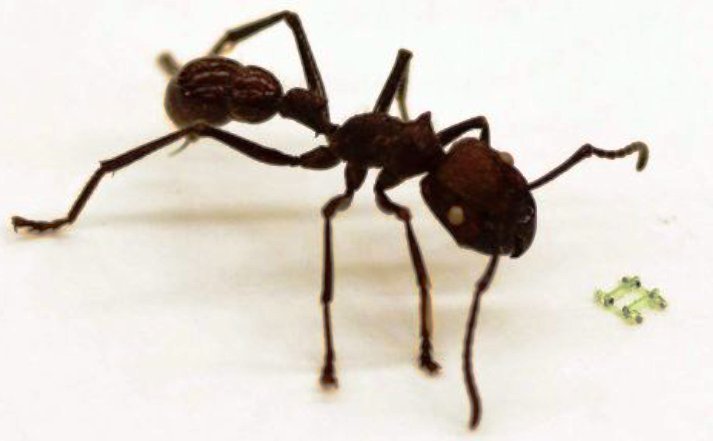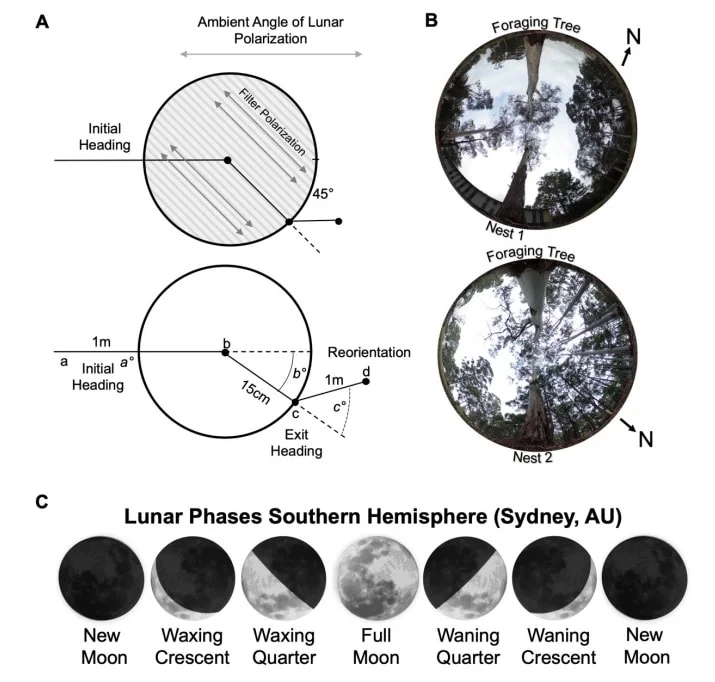Polarized moonlight helps ants find their way home
- April 22, 2024
- 0
Two species of ants living in Australia have become the first known land creatures to use polarized moonlight for night navigation. These animals have a brain the size
Two species of ants living in Australia have become the first known land creatures to use polarized moonlight for night navigation. These animals have a brain the size

Two species of ants living in Australia have become the first known land creatures to use polarized moonlight for night navigation. These animals have a brain the size of a “pinhead” and poor eyesight, but they perfectly find their way home with the help of the rather weak light reflected from the surface of our satellite.
For many animals, visible solar radiation is the main reference point in their habitat. Direct sunlight, including reflected from the lunar surface, determines the direction of movement of living things. However, celestial objects may not always be visible in the sky, especially in cloudy weather, and this may create some problems in navigating animals that rely solely on direct radiation.
There are creatures in nature that have adapted to the absence of light. They had so-called polarized vision, unlike people who suffer from “polarization blindness.”
Sunlight (including that reflected from the moon) consists of different wavelengths oscillating in different directions. When light passes through the atmosphere it is reflected and refracted and a polarization effect can occur; This usually occurs when the sun is very low or sets just below the horizon. In the case of wave oscillation, it occurs in a certain plane. Initially, sunlight is not polarized, its waves do not have a clearly defined direction of oscillation.
Some animals not only distinguish the polarization of light almost like color or brightness, but also use it to determine directions of movement. Creatures that usually lead a nocturnal lifestyle, that is, hunt in very dim moonlight, have such a specific vision. For example, in 2014, German scientists discovered that bats from the nocturnal bird family (myotis) use polarized light to calibrate the internal magnetic compass and determine the correct flight direction.
Until recently, it was thought that dung beetles were the only insects to use moonlight polarization. Scarabaeus lamarcki. They do this not for orientation, but simply to roll their balls (food source) straight.
A group of Australian scientists led by biologist Cody Freas (Cody Freas) from Macquarie University discovered that in addition to dung beetles, “polarized vision” is also possessed by two species of ants from the genus bulldog ants (myrmecia). related to these types Myrmecia pyriformis And Myrmecia midas. However, unlike beetles, these insects use polarized moonlight specifically for orientation. The scientists reported this in their paper published on the website of the electronic archive of biology preprints. bioRxiv.
These ants live in Australia. They go foraging after sunset and return home in the twilight before dawn. Scientists have long hypothesized that Myrmecia pyriformis and Myrmecia midas use sunlight as a spatial reference point, but only the relatively bright light seen at dusk. Freas and his colleagues found that many ants return home with their prey at night and under the moon.

To control exactly how the ants move through space, biologists placed polarizing filters on the insects. They did this when the animals returned to their nests in the moonlight.
Freas and his colleagues gradually turned the filter, causing the polarization to change, creating the paths the scientists needed and the insects then moved. So by changing the polarization of moonlight, the biologists forced the ants to move in the direction the researchers determined with the filter.
As soon as the experts removed the filter, the ants immediately returned to their home path.
“Ants move on the ground under bushes and trees, so they rarely see sunlight or moonlight. But they have a “window” in the crowns of trees through which they come to look for fresh water secreted by leaves and young shoots. Then the sky opens and polarizing light patterns appear.” Freas stated that this light was enough to keep the insect’s “celestial compass” working all night.
Additionally, researchers found that ants are much less likely to go looking for food during new moon, when the moon is not visible in the night sky.
Source: Port Altele
As an experienced journalist and author, Mary has been reporting on the latest news and trends for over 5 years. With a passion for uncovering the stories behind the headlines, Mary has earned a reputation as a trusted voice in the world of journalism. Her writing style is insightful, engaging and thought-provoking, as she takes a deep dive into the most pressing issues of our time.